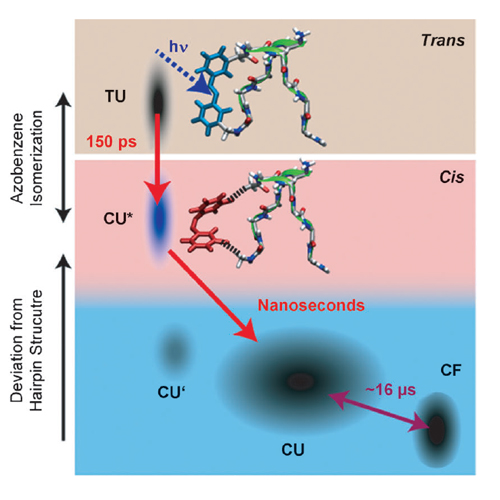Isomerization- and Temperature-Jump-Induced Dynamics of a Photoswitchable β-Hairpin
20-Dec-2013
Chemistry, 2013, DOI: 10.1002/chem.201303189, Volume 20, Issue 3, pages 694–703 published on 20.12.2013
Chemistry, online article
Chemistry, online article
Conformational changes in proteins and peptides can be initiated by diverse processes. This raises the question how the variation of initiation mechanisms is connected to differences in folding or unfolding processes. In this work structural dynamics of a photoswitchable β-hairpin model peptide were initiated by two different mechanisms: temperature jump (T-jump) and isomerization of a backbone element. In both experiments the structural changes were followed by time-resolved IR spectroscopy in the nanosecond to microsecond range. When the photoisomerization of the azobenzene backbone switch initiated the folding reaction, pronounced absorption changes related to folding into the hairpin structure were found with a time constant of about 16 μs. In the T-jump experiment kinetics with the same time constant were observed. For both initiation processes the reaction dynamics revealed the same strong dependence of the reaction time on temperature. The highly similar transients in the microsecond range show that the peptide dynamics induced by T-jump and isomerization are both determined by the same mechanism and exclude a downhill-folding process. Furthermore, the combination of the two techniques allows a detailed model for folding and unfolding to be presented: The isomerization-induced folding process ends in a transition-state reaction scheme, in which a high energetic barrier of 48 kJ mol−1 separates unfolded and folded structures.











